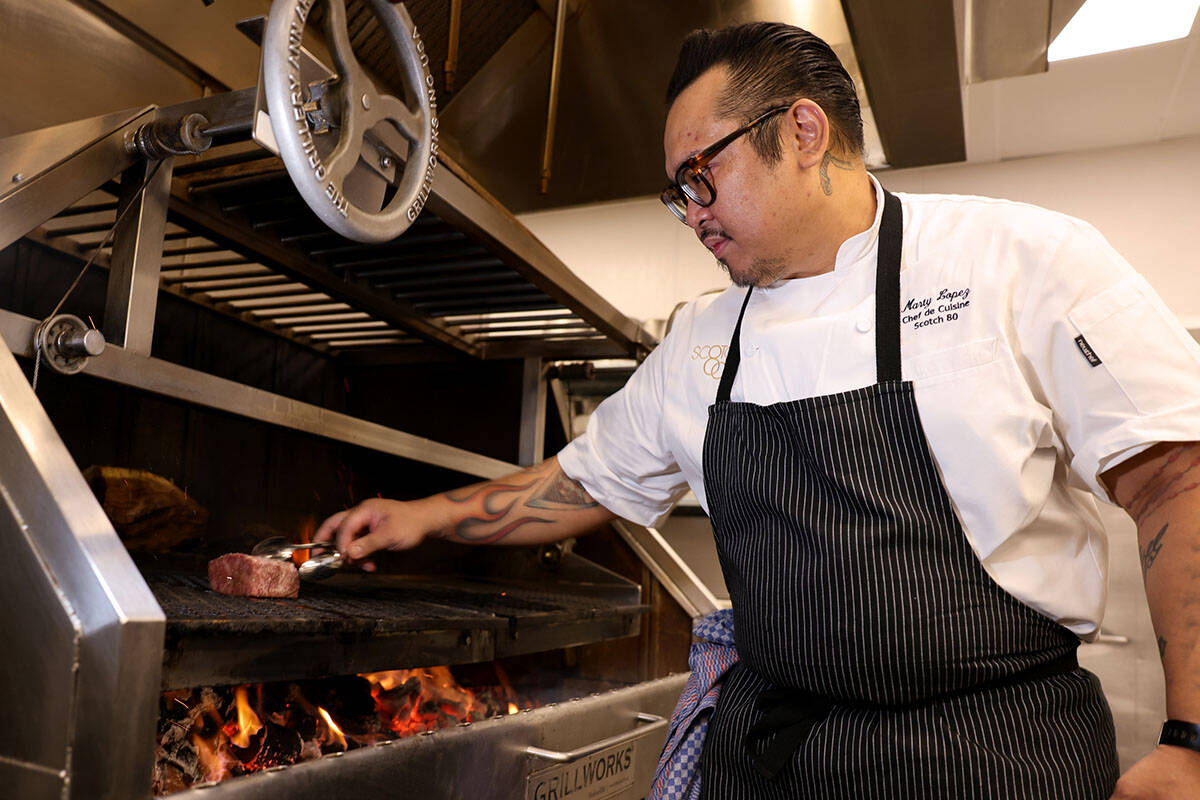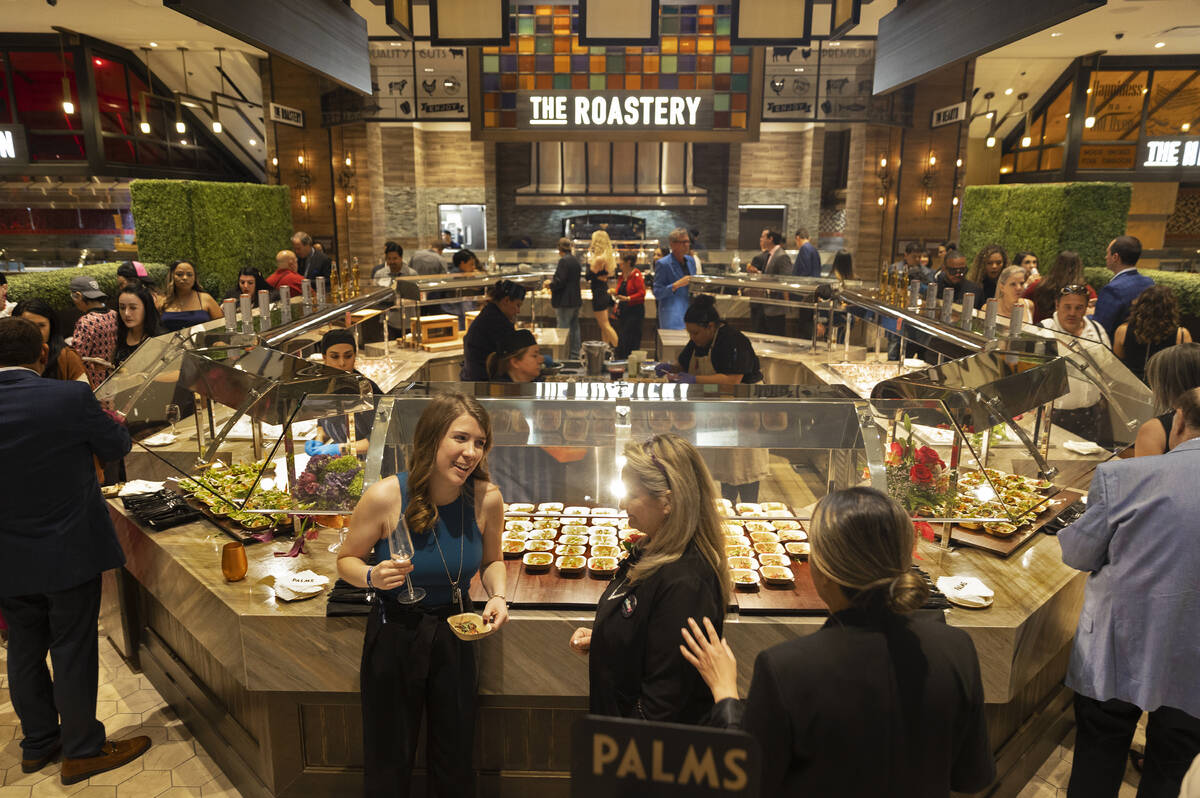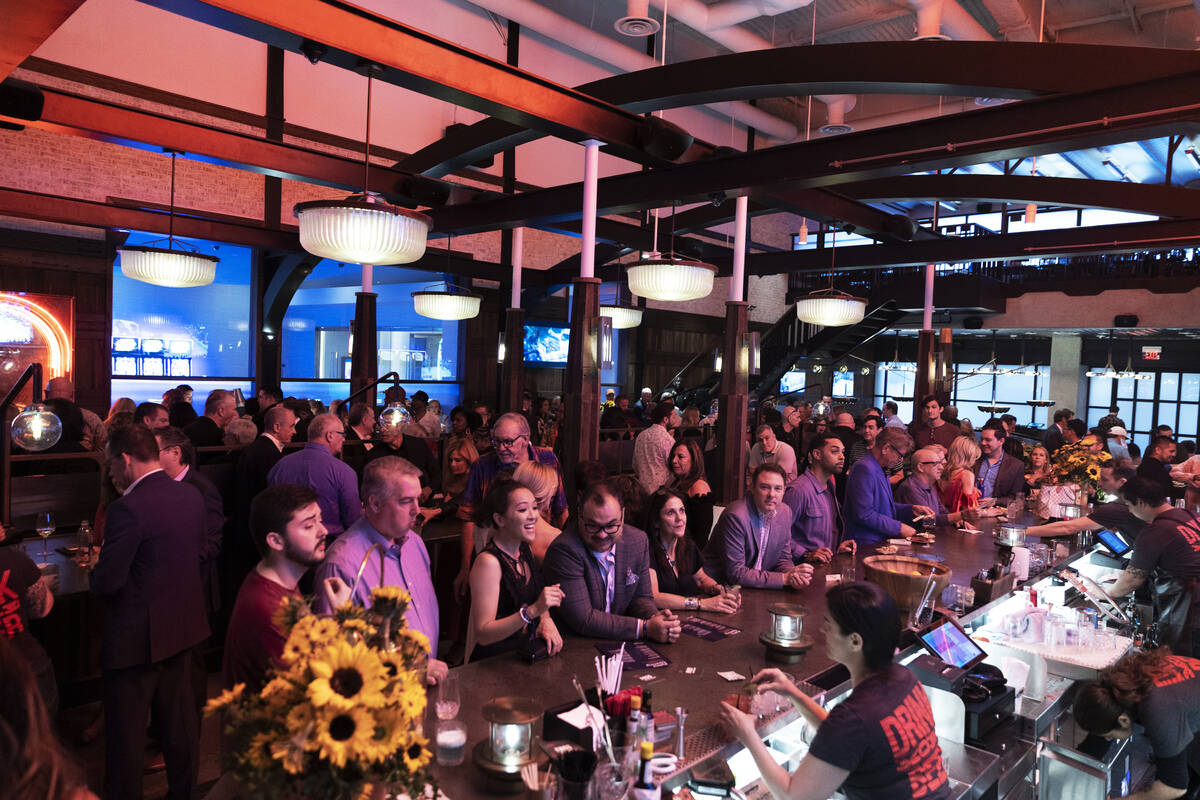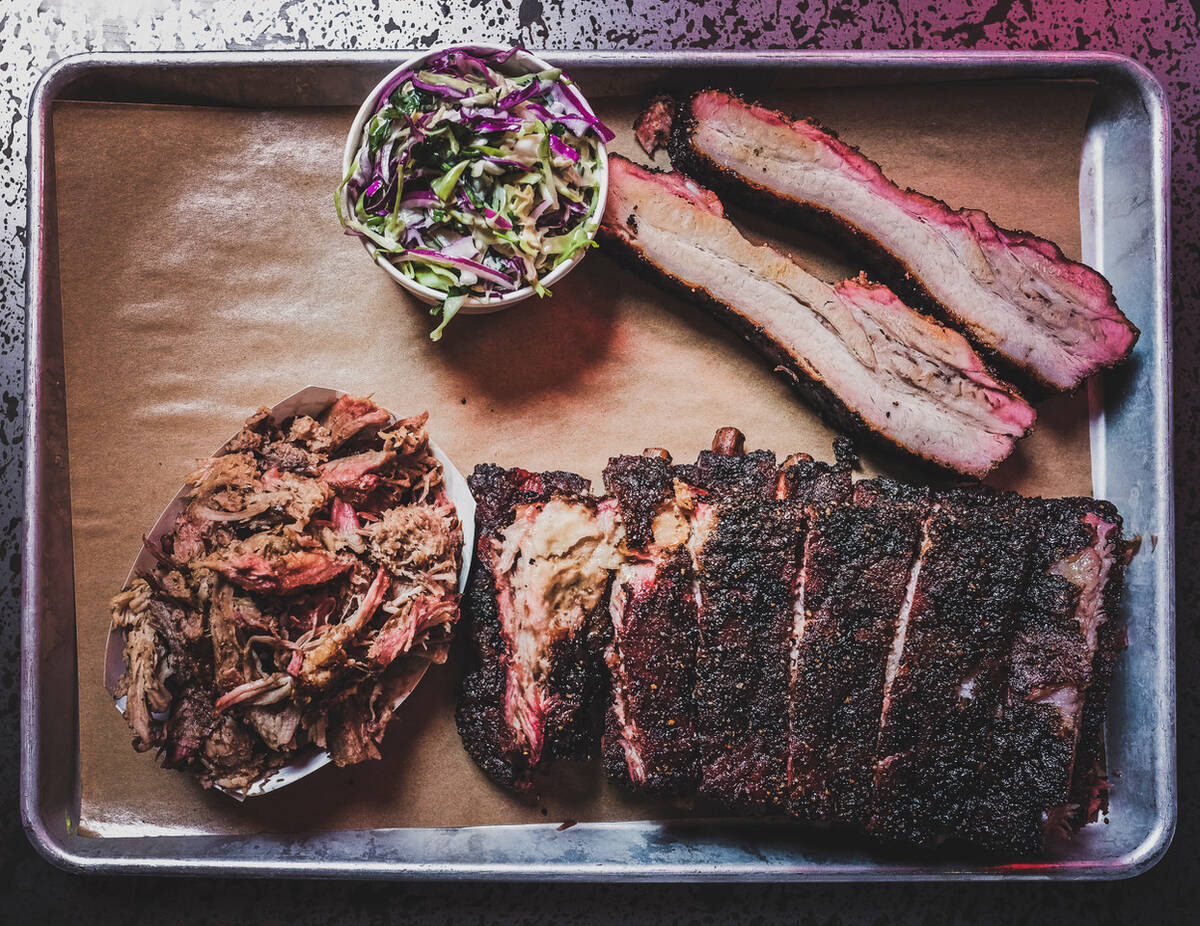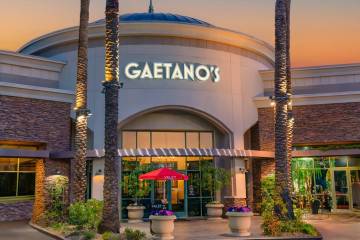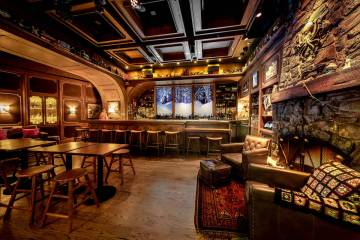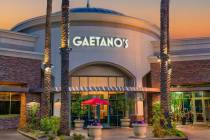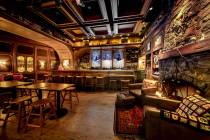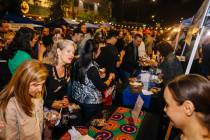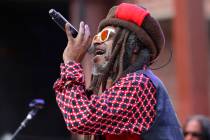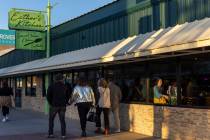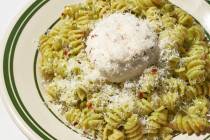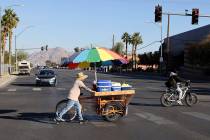What’s new and what’s ahead in food and drink at Palms
Sixty days after the Palms reopened, emerging from the pandemic in late April with new owners, what might easily strike a visitor about the food and drink here is its … potential.
Is that an odd takeaway? Certainly, the Palms isn’t new — it launched in 2001, just two months after 9/11 — and famed draws like Ghostbar and N9NE Steakhouse have been closed for several years (though Ghostbar is returning).
And yet, dining at the Palms is nicely straightforward, with restaurants arranged around the perimeter of the gaming floor (no rummaging in far-flung corners of the property). The restaurants also feel spacious and stylish, not least because they were closed by the pandemic less than two years after a $620 million renovation to the property.
Today at the Palms, a couple of dining concepts have debuted since reopening, others restaurants are showcasing certain offerings, and still others are maintaining what’s already dialed in. Ahead, how will the owners harness this potential?
New
Serrano Vista Café: The café is the property’s all-day spot for breakfast, lunch and dinner. The restaurant is also the younger sibling of Serrano Vista Café at Yaamavá Resort in Highland, California. The resort, like the Palms, is owned by the San Manuel Band of Mission Indians.
The main menu ranges internationally: poutine, cauliflower tikka masala, pad Thai, loco moco, Margherita flatbread, Guatemalan-style roast chicken. One specialty is pho’rench, which features a side of pho broth for dunking a Vietnamese version of a French dip sandwich (shaved prime rib, hoisin, sriracha mayo, Thai basil, pickled vegetables, cilantro, mint).
“This is the concept that makes sense to bring here,” said Greg Van Stone, vice president of food and beverage for the Palms. “It’s a connection to the Yaamavá guests with some of their favorite items.”
Green St. Test Kitchen: Vegas Test Kitchen and the Palms have joined to present Green St. Test Kitchen, which occupies the former Green St. restaurant. On weekends in June and July, the space is hosting a pop-up restaurant serving a $59 prix fixe menu created by Las Vegas chefs.
Binky’s by chef Josh Bianchi offered rustic Italian-American dishes in the first part of June. On July 1 and 2, Makatas by chefs Bryan Tejada and Gary FX LaMorte will send out a “healthy, social and succulent” Pinoy-inspired menu. The final four weekends in July, Mamasan by chef Crystina Nguyen will blend Polynesian, Chinese and American traditions to create a modern take on puupuu platter cooking.
Showcasing
Scotch 80 Prime: Scotch 80, the onetime N9NE Steakhouse now named for a Vegas neighborhood, recently regained its certification from the Kobe Beef Marketing & Distribution Promotion Association to serve real Kobe Beef. Fewer than 50 restaurants in the U.S. — and only five in Vegas — are currently approved to sell Kobe, which must come from Tajima black cattle born, raised and harvested in the Hyogo Prefecture of Japan.
Kobe Beef is a designated and protected product under Japanese law. So, what does that mean for “American kobe”? It’s a meaningless term. Or $15 “kobe beef” sliders? A menu lie.
The application fee to the Kobe Beef Association was $4,000 (nonrefundable).
“It shows that you have a real interest in their product,” said Marty Lopez, chef de cuisine of Scotch 80, who led the effort to bring in Kobe Beef again. “It shows a commitment. It weeds out a lot of places. Kobe Beef really gives and adds value to what we’re doing.”
Being certified to serve Kobe also means obtaining an importer certified by the association. From week to week, the product is highly allocated. In a given week, Scotch 80 might receive just 10 pounds of Kobe Beef tenderloin, yielding only a dozen 6-ounce portions. Annually, the restaurant’s importer might be allowed to import a scant 7,000 pounds of Kobe for the entire West Coast.
When portioning Kobe, there is significant trim that the chef turns into tallow, which is placed in bags with steaks (not Japanese) that are cooked sous vide. “We have beef-flavored beef,” Lopez said.
Kobe will be the flagship offering in a Japanese beef program the chef is creating, one that will also feature other hard-to-obtain products. Consider olive-fed beef from one island in Kagawa Prefecture. Olive pulp from olive oil making is roasted, then added to the cattle feed. In turn, the cattle waste fertilizes the olive groves.
“There’s a whole sustainability chain,” Lopez said.
Or there’s snow beef, from snowy Hokkaido (hence the name), the northernmost of Japan’s main islands. “It’s very enjoyable raw, with a very nice nutty flavor,” the chef said.
The Japanese beef program at Scotch 80 will also include densely marbled A5 wagyu beef. The other afternoon, the chef served rolled slices of grilled A5. He graced the bites with white soy and black truffle sauce, then topped them with heaps of caviar and shiny leaves of edible gold.
No one spoke. They only chewed and moaned.
A.Y.C.E. Buffet: It’s fitting a buffet is named after the acronym for “all you can eat.” But the folks at the Palms pronounce it “ace.” Right after the buffet reopened (many in town still have not), it received lots of attention for its A.Y.C.E. lobster night. News reports showed people waiting in line for hours on Wednesdays to stuff themselves with crustaceans.
“One man ate 28 lobsters,” said Marcus O’Brien, who, as executive chef of the Palms, must keep an eye on such consumption.
The line situation has been worked out, lobster night remains, its cousin (snow crab and prime rib night) runs on Fridays, and if you’re not feeling surf and turf, there are seven other themed food stations.
Dialed in
Send Noodles: This spot for bone broth ramen, beef tendon soup, shrimp udon with X.O. sauce and other noodle bowls possesses one of the most arresting murals of any restaurant in town. Look closely. Is the woman emerging from the silvery swirling pond or drowning? Is that a swan with dead eyes and a stabbing clawed foot? Are those red rocks in the water — or hunks of meat? The mood (and slurps) continue late on weekends when Send Noodles is open until 2 a.m.
Tim Ho Wan: A striking photograph of a woman in a modern version of a traditional Chinese headdress commands the dining room at this Vegas outpost of the Hong Kong dim sum chain. The signature pork buns are brushed with egg whites, producing a light crust that’s very different from the usual steamed pork buns. A bar serving craft cocktails also departs from the standard dim sum M.O.
Mabel’s BBQ: Mabel’s comes courtesy of “Iron Chef” winner Michael Symon. A J&R Smoke-Master Oven is fired up again. So are two J&R Oyler BBQ Pits capable of cooking 60 briskets at once, or 20 briskets and a dozen pork shoulders. “It’s all about great brisket, great pork, great wood, just slow-cooked quality food,” O’Brien said. To wit: a platter of brisket, Duroc pork belly with hoisin glaze, and pork belly burnt ends cooked for three hours with the beans.
A bit of buzz
Shark, a seafood restaurant from chef Bobby Flay that closed during the pandemic, will not reopen, Van Stone, the food and beverage vice president, said. “We’re looking for a new restaurateur.” However, Vetri Cucina, another closed restaurant at the Palms, could relaunch in some form by late summer or early fall.
Contact Johnathan L. Wright at jwright@reviewjournal.com. Follow @ItsJLW on Twitter.



